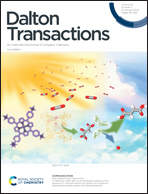A DFT perspective on organometallic lanthanide chemistry
Abstract
Computational studies of the coordination chemistry and bonding of lanthanides have grown in recent decades as the need for understanding the distinct physical, optical, and magnetic properties of these compounds increased. Density functional theory (DFT) methods offer a favorable balance of computational cost and accuracy in lanthanide chemistry and have helped to advance the discovery of novel oxidation states and electronic configurations. This Frontier article examines the scope and limitations of DFT in interpreting structural and spectroscopic data of low-valent lanthanide complexes, elucidating periodic trends, and predicting their properties and reactivity, presented through selected examples.

- This article is part of the themed collection: 2024 Frontier and Perspective articles


 Please wait while we load your content...
Please wait while we load your content...